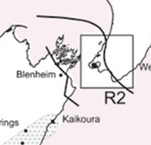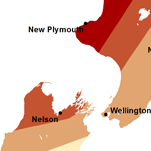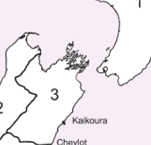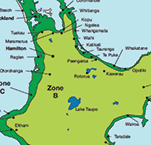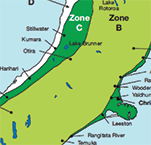Site Analysis
Understanding all the features of a site, using and protecting the best, and minimising the impact of the worst.
New Zealand climate and environmental zones
Climate should influence building form and location on site, material choices, window/door size and placement, and loading and bracing requirements.
On this page:
- climate zones for energy efficiency
- wind, earthquake, snow and exposure zones
- specific design standards.
Climate zones for energy efficiency
New Zealand is divided into six climate zones, taking account of climate data and territorial authority boundaries. You can find maps showing the six climate zones in Appendix C of H1/AS1 and H1/VM1 5th edition, amendment 1.
The online tool BRANZ Maps identifies a range of features for a specific location, including climate zone, exposure zone and earthquake zone.
Wind, earthquake, snow and exposure zones
Under NZS 3604:2011 Timber framed buildings, New Zealand is also divided into zones based on other environmental features including wind, earthquake, snow load and exposure.
Design standards
| Design factor | Map | NZ standard | Design for… |
| Bracing | Wind zone | NZS 3604: Section 5 |
Bracing requirements |
| Earthquake zone | NZS 3604: Section 5 |
Bracing requirements | |
| Durability | Exposure zone | NZS 3604: Table 4.1 |
Timber treatment levels Claddings selection Fastenings selection Flashings selection |
The zones given in NZS 3604 are general classifications only. Specific design can result in more economically designed structures.
- AS/NZS 1170 Structural designs includes methods to determine wind, earthquake and snow effects for specific building sites using engineering first principles. A registered engineer is required to undertake design according to this standard.
- NZS 3101 Concrete structures includes exposure classification maps to determine the steel reinforcing requirements of concrete construction. This standard identifies corrosion zones and also gives typical wind speeds and directions for New Zealand’s major cities. This standard is in the process of being amended.
Updated: 24 March 2024


